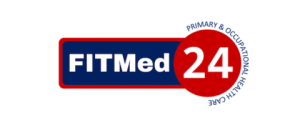Each year, the South African economy is robbed of billions as a result of absenteeism in the workplace. While a small proportion of those absent may simply be opportunists claiming a day or two off, the majority are either sick or injured. Unfortunately, there are still too many cases in which the origin of those illnesses or injuries can be traced to the workplace itself. It is the latter concern that is now prompting many employers to arrange for occupational medicals.
The workplace environment can often present health hazards, so legislation requires employers to take steps to identify them. Where a particular hazard is considered to pose a potential threat to the health or safety of their employees, they are legally bound to implement whatever measures may be necessary to protect them. To test the impact of such measures, while monitoring of hazard levels is important, only by conducting relevant occupational medicals in parallel can one be certain that countermeasures taken are sufficiently effective.
While fluctuating market demands, competitor’s strategies, and fluctuations in exchange rates can all have a negative impact on the performance of a business, absenteeism is at least as damaging, if not more. That said, unlike the other factors, it is one that can be controlled. The simple precaution of determining whether or not an employee’s health might be threatened by the job they are required to perform could make a huge difference to a company’s productivity. Occupational medicals could spell the difference between paying a staff member for doing their job and paying for non-productive sick leave and possibly even for a temporary replacement. So, what do these examinations consist of?
The clue is in the name. As part of an ongoing monitoring programme, these examinations focus on any relevant physical manifestations that might be the result of a worker’s occupation. The content of these examinations must, therefore, relate directly to the nature of the job. So, for example, in the case of miners and others who work in a dust-filled atmosphere, tests of respiratory function will feature prominently in occupational medicals. Similarly, workers who are regularly exposed to extreme levels of ambient noise might be given an audiological examination.
The same criteria can also be applied as part of the recruitment process. As well as possessing the appropriate experience and qualifications, where relevant, it is reassuring to know that a candidate is physically suited to their proposed duties. Accordingly, there are specialised occupational medicals for those in the food-and-beverage industry, construction workers, and drivers of heavy vehicles, as well as screening for general wellness in the workplace.
Recent Posts
The Importance of a Hygiene Survey in the Workplace: A South African Perspective
In the South African workplace environment, the health and safety of employees are paramount. With a diverse range of industries—from mining and manufacturing to agriculture and services—ensuring...
In today’s competitive business landscape, many companies view employee medicals as a necessary expense a grudge buy. However, this perception is changing as more organizations recognize the...
